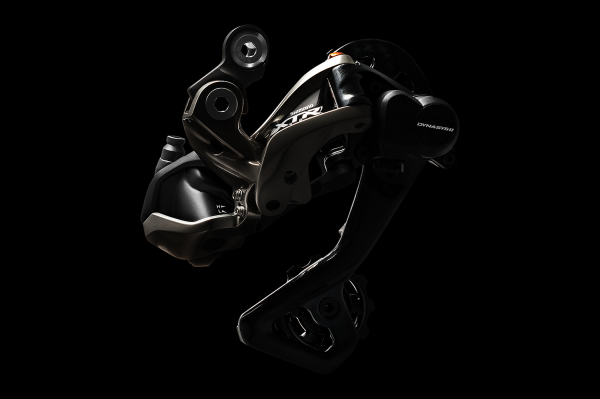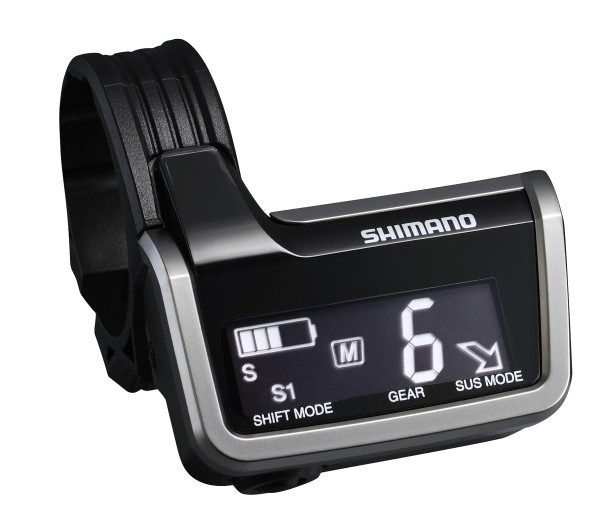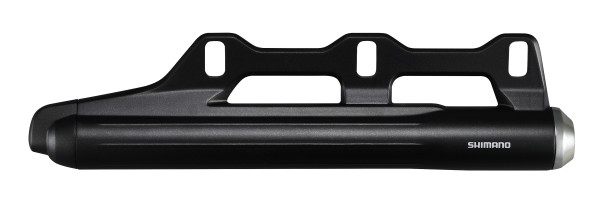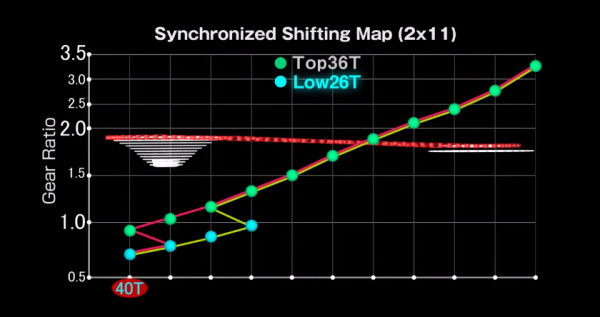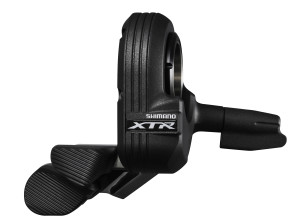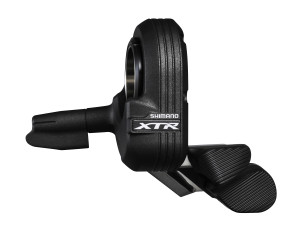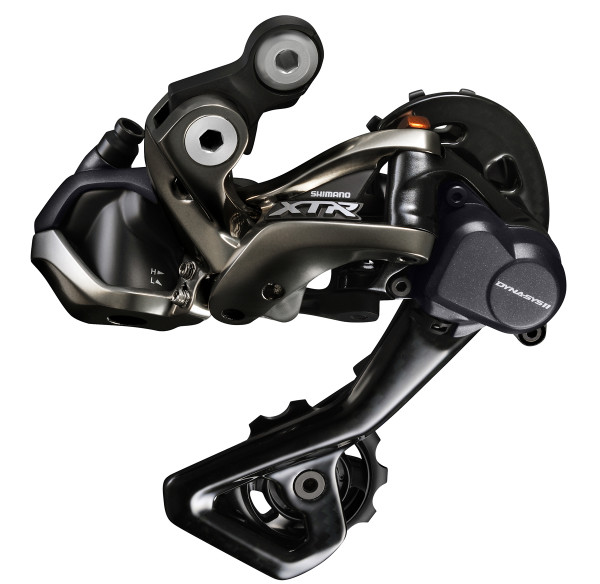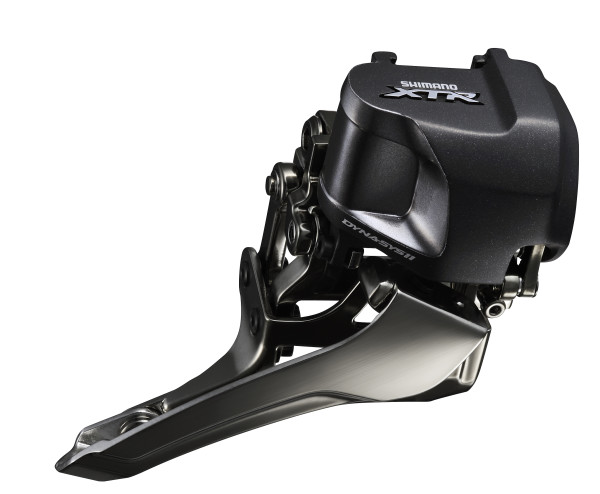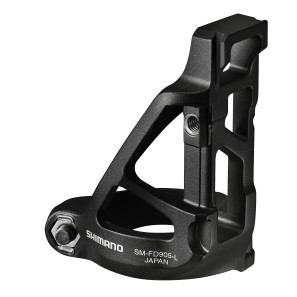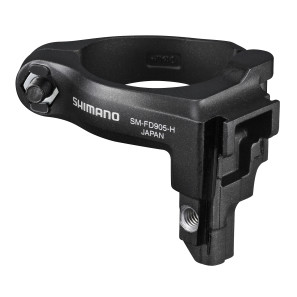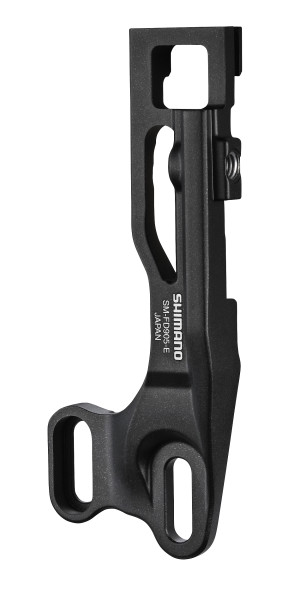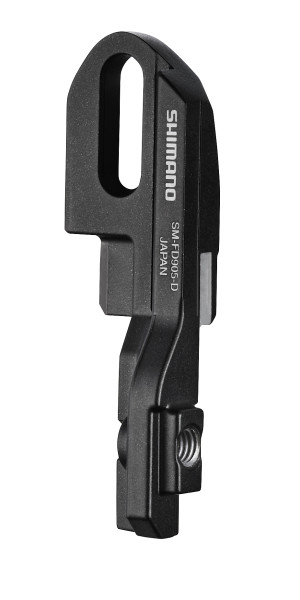The future is now. Introducing the first ever compete production electronic mountain bike drivetrain, Shimano XTR Di2 M9050. Shimano was rumored to have an electrified version of their new top tier mountain bike group, but we’ve had to wait until now to see it.
Bicycle drivetrains seem to be at a critical point, one where the number of speeds, chainrings, manner of shifting, and the presence or absence of wires are all crashing together in a mix of aluminum, steel, carbon, and Ti. While the drivetrain arms race has yet to be fullyconquered by any one manufacturer, Shimano has delivered a strong blow with the unveiling of XTR M9050.
If the choice between 1x, 2x, and 3x wasn’t already enough, Shimano has managed to add even more options to choose from – and it’s these new options that have us most intrigued.
Firebolt through for more…
Drawing on more than half a decade of past experience with Di2, Shimano has no qualms about calling 9050 the most advanced Di2 system yet. Many of the possibilities with XTR wouldn’t have been possible without the advancements of the E-Tube wiring system which means that yes, for now 9050 will have wires. Shimano remains coy about the future of wireless electronic drivetrains from either them or their competitors, but for now the system will have the same wires and connectors as current E-tube systems. That means that the 9050 system is directly compatible with the Fox ICD suspension, with controls built into the shifters and suspension position displayed on the SC-M9050 display unit.
In addition to Fox ICD mode, the handlebar mounted display unit will show the battery level, gear position, and Shift Mode. Changes to the system can also be made at the display including switching between S1, S2, and manual shift maps (we’ll get to that in a bit), and adjusting the rear derailleur with an easy adjustment mode that includes a numerical adjustment indicator.
In total, the system has 9 E-tube wiring ports – 3 at Junction A, and 6 at Junction B. Junction A is found at the Display Unit which also serves as the charging port which provides the ability to charge internal batteries. However, the new SM-BTC1 battery case acts as a holder for the SM-BTR2 battery and mounts to a mountain bike’s bottle mounts. The case also serves as Junction B with 6 E-tube wiring ports and a built in cable organizer. Shimano says the 6 ports leave room for expansion – which after the FD, RD, Battery, Junction A, and Fox ICD rear leaves what? Is it possible this extra port hints towards a future with electronic dropper posts?
While Shimano isn’t releasing an official XTR internal battery with the system, the E-tube wires are compatible with the current SM-BTR2 battery which can be stashed in many seat posts. Shimano hasn’t introduced a separate Junction B for internal wiring, but you can use the current SM-JC41 internal junction Box that is used for Ultegra and Dura Ace. If you do that though, you will be limited to 4 wiring ports which would mean no Fox ICD rear control (4 ports – one for battery, one for FD, one for RD, and one to Junction A). Something tells us that in the future as internal wiring and battery storage standards get worked out, we may see a new internal Junction B as well.
One of the most exciting features of 9050 Di2 would have to be the new Synchronized shifting system. We would be remiss if we didn’t give Fairwheel bikes credit for getting the ball rolling with the first sequential shifting drivetrain that we’ve seen, but it seems that Shimano and maybe even SRAM have taken notice. First, the disclaimer – if you aren’t keen on a sequential shifting Shimano isn’t forcing you, as you can use two shifters just like you would currently, just electronically. However, if you like the idea of always being in the most mechanically efficient gear and only having one shifter to worry about with one button for up and one down, Synchronized shifting seems like the ticket.
Shimano XTR 9050 already combines the auto-trimming feature that has made the front shifting on their road groups so popular, but Shimano Synchronized Shift takes it to the next level. Using a single shifter to shift up or down, the brain of the drivetrain automatically shifts both front and rear derailleurs to stay in the optimal gear. This opens up the possibility of a 2×11 or even 3×11 drivetrain all controlled with a single shifter. Shimano made a point with Dynasys in pointing out that a bigger gear is a more mechanically efficient gear which helps to prolong drivetrain life. Synchronized Shift automatically keeps you in the biggest gear while sequentially moving through the gearing.

Shimano has built in two different customizable shift maps which allow you to change when the front derailleur shifts if the terrain or personal preference warrants it, and the Display Unit can be set to put out an audible alarm that will sound just before an upcoming front shift. Riders can chose to run two shifters and change back and forth between Synchronized Shift modes and manual or ditch one of the shifters completely.
This also offers ability to run a left or a right shifter only, which could be very handy for adaptive bikes where a right shifter (or left for that matter) may not be an option. Shimano mentions that Di2 has been a revelation for the para-athlete community, and XTR Di2 is only set to provide even more options – pretty cool.
Speaking of shifters, XTR 9050 ushers in the new Di2 Firebolt which is a complete new take on the way mountain bike shifters are designed. Since they are simply buttons, Shimano was able to design a shifter that they say is perfectly designed with ideal ergonomics. The rotary design places two buttons directly at the tip of your thumbs. Each lever position can be adjusted independently, and the buttons offer what Shimano calls “Short stroke, perfect click,” which leads us to believe they will have a tactile click.
Like other Di2 shifters, the Firebolt shifters are fully programmable including multi shift, shift speed, and control of Fox ICD suspension. Changes can be made by connecting the bike to your computer through the battery charging USB cable and Shimano points out that you can program the shifters to perform whatever function you need them to do.
Of course, no mountain bike drivetrain would be complete these days without a clutched derailleur so the RD-M9050 includes Shimano’s Shadow + technology complete with the new easily adjustable clutch mechanism that was introduced on M9000. Offered in both GS and SGS cage options, the derailleur is fairly similar to the XTR M9000 with the addition of a motor. That includes the new geometry and an offset parallelogram for improved shifting and increased stability.
One of the big concerns with XTR Di2 will inevitably be damaging the rear derailleur. While it won’t completely protect you from obstacles on the trail, the derailleur does at least have the same crash saver mode built in where the derailleur will disconnect internally following a crash to protect it from harm.
For many riders, the reasons for switching to 1x drivetrains include simplicity, less weight, and the fact that many front derailleurs over the years have, well, sucked or at the very least been hard to adjust. Now, that could all be changing. XTR 9050 will already be lighter and simpler with only one shifter, and with the addition of the new FD-M9050, front shifting should be dramatically better as well. Built to shift with 25% more power than the M9000 front derailleur, the FD-M9050 should shift better under load while auto trimming for quiet operation.
Shimano has chosen a modular mounting system for the front derailleur, with separate clamps available for traditional seat tubes in low and high mount, as well as high and low direct mount. Not only does this cut down on expensive parts for dealers to carry, it also means if you want to switch your system to a different bike you’ll need a new bracket rather than a new derailleur. Rather than the typical braze on mount found on road Di2 derailleurs, the mountain FD slides onto the bracket and then is bolted in place.
Still set on a 1x drivetrain? That’s fine – simply ditch the front derailleur and run a single Firebolt shifter and rear derailleur. Single ring divetrains will still use Shimano’s 11-40 11 speed cassette which doesn’t offer quite the range of the 1x competition from SRAM. To that regard Shimano states that their philosophy is based around specific gearing for specific courses. By keeping all gear steps under 15%, cadence changes are kept to a minimum and the drivetrain should theoretically last longer thanks to more efficient gearing. That’s probably not that answer many want to hear, but now with a 2×11 drivetrain and Synchronized Shifting providing a wider range than 1x systems with a single shifter, Shimano has a compelling argument.
What about the weight? When it comes to the entire system, a 2x drivetrain with only one shifter will be the same weight as a mechanical M9000 system. The actual M9050 components are 47 grams heavier than M9000, but the subtraction of the weight from cables and housing levels the playing field.
- Front derailleur (FD-M9070 D-type) : 115 grams
- Rear derailleur (RD-M9050-GS) : 289 grams
- System display (SC-M9050) : 30 grams
- Shift switch (SW-M9050) : 64 grams
- FD = M9050 is 5 grams lighter
- RD = M9050 is 68 grams heavier
- SL = M9050 is 36 grams lighter (if you just use 1 it is 136 grams lighter)
- BT = 51 grams (extra item)
- SC = 30 grams (extra item)
Pricing is still to be determined, but Shimano expects the price difference to be roughly the same as mechanical Dura Ace and Di2 Dura Ace, or about 40% more. XTR M9050 is expected to ship to retailers in Q4 of 2014, so we all have to wait at least until October.
